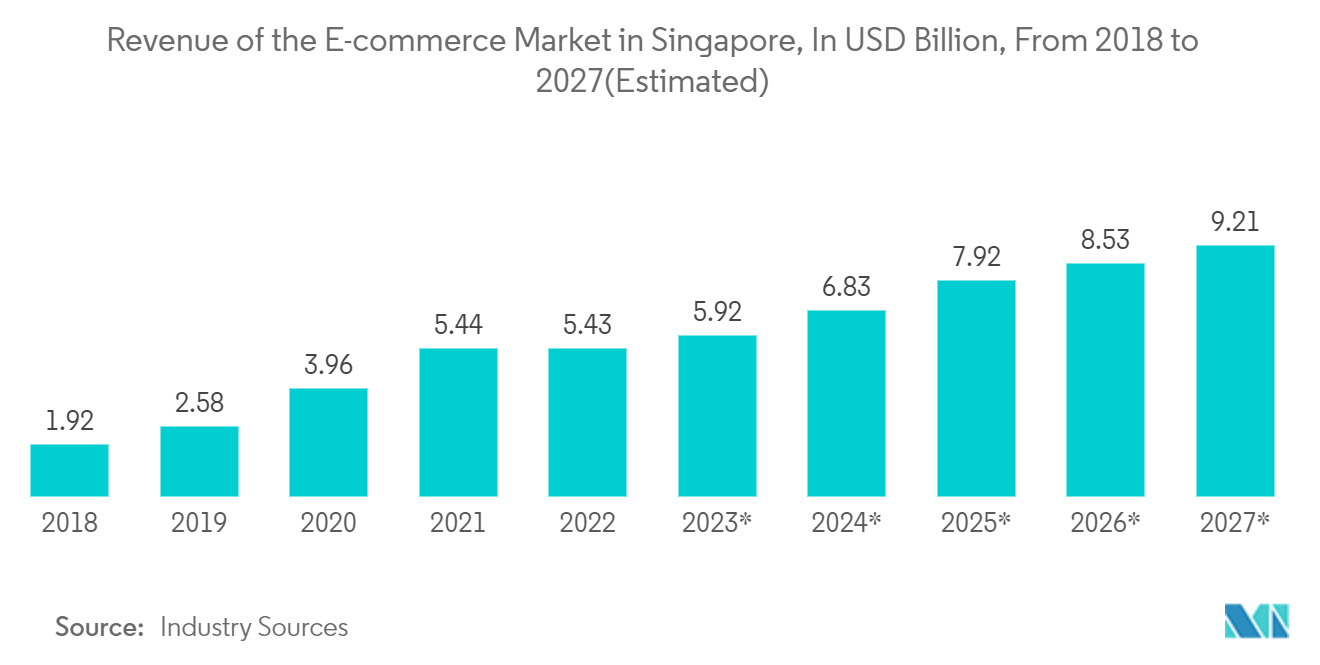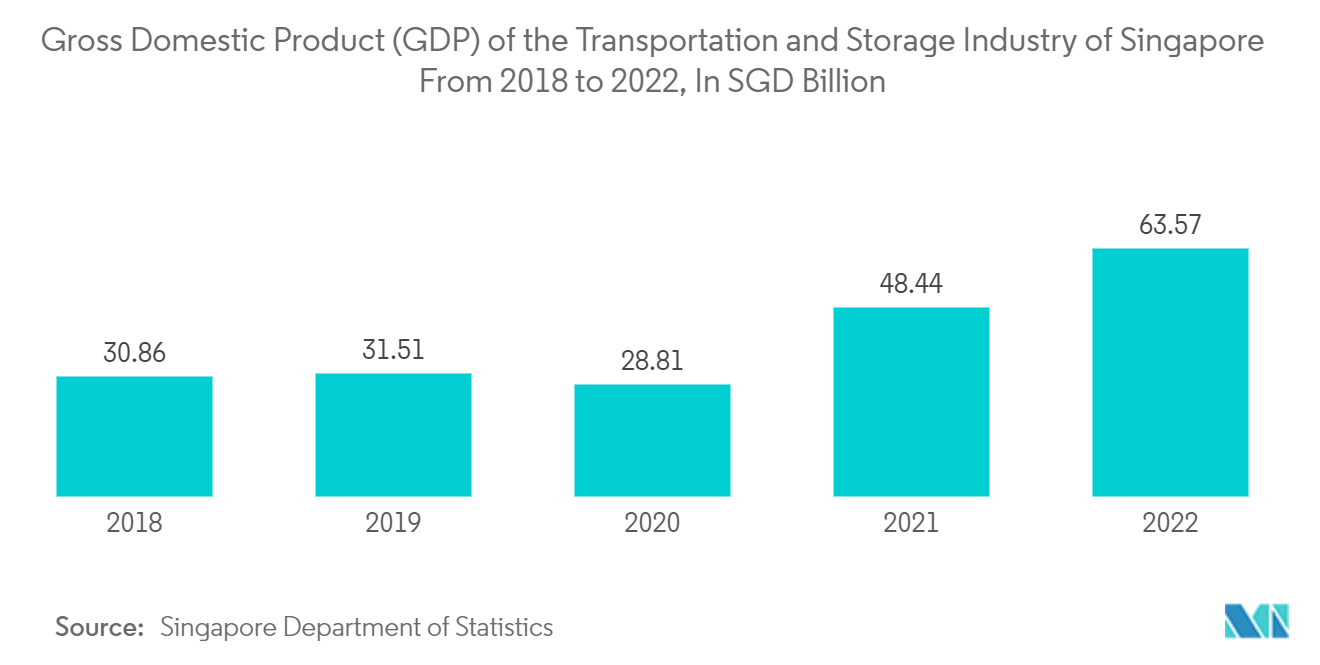Market Trends of Singapore Freight And Logistics Industry
Growing E-commerce in Singapore
Singapore continues to evolve as a major e-commerce market and is expected to grow at a compound annual growth rate of 16.2% from SGD 7.8bn (USD 5.9bn) in 2021 to SGD 14.2bn (USD 10.7bn) in 2025
The first initiative will strengthen Singapore's digital infrastructure, particularly digital connectivity, data analytics, payment systems, and new business innovation.
A key initiative will be developing 5G infrastructure, the backbone of the country's digital economy. About 50% of the country will have 5G coverage within two years, and there will be two nationwide 5G networks by 2025. The greater bandwidth from the networks will increase the capacity to handle large e-commerce orders.
Singapore is ramping up its cybersecurity capabilities to protect businesses and ensure that cross-border data flow is secure.
The country signed the world's first digital-only trade agreement through the Digital Economy partnership Agreement (DEPA) with New Zealand and Chile to strengthen this aspect. Through this agreement, Singapore aims to develop international frameworks to support businesses engaging in cross-border digital trade and e-commerce.

Development of Logistics Infrastructure and Connectivity
The government of Singapore continues to invest in transport infrastructure to maintain the country's position as a world-class city and key transport mode between Asia and the world.
Singapore identified key underlying infrastructures that it believes will pave the way for the country to become a global and regional e-commerce hub. Its "five-pronged" strategy includes building out the local 5G networks, supply chain capabilities, and payment platforms.
Singapore has seamless transport connectivity. It has dense sea and road networks for multimodal transshipment, with a Seamless intermodal connectivity between one of the world's busiest seaports and airports. PSA has four container terminals, one multi-purpose terminal, and one vehicle transshipment terminal operational in the country. PSA also has a huge shipping line network of 200 shipping lines, connecting 123 countries with vessels, with a frequency of 60 per day.
Singapore will also continue to develop its supply chain capabilities. In this regard, Enterprise Singapore and other government agencies will work with the logistics sector to value-add to cold-chain management, retail, and pharmaceutical logistics. A data infrastructure foundation will be built up for sharing secure data across supply chains.
The Singapore government has already started transforming logistics as part of its USD 4.5 billion Industry Transformation Programme. The program's primary objective is to drive excellence in logistics operations and become leaders in innovation while also building a strong core of local logistics talent, making Singapore attractive to inward investment. This scheme is named the Logistics Industry Transformation Map (ITM), and it follows similar plans for Singapore's food and beverage and precision engineering sectors.

